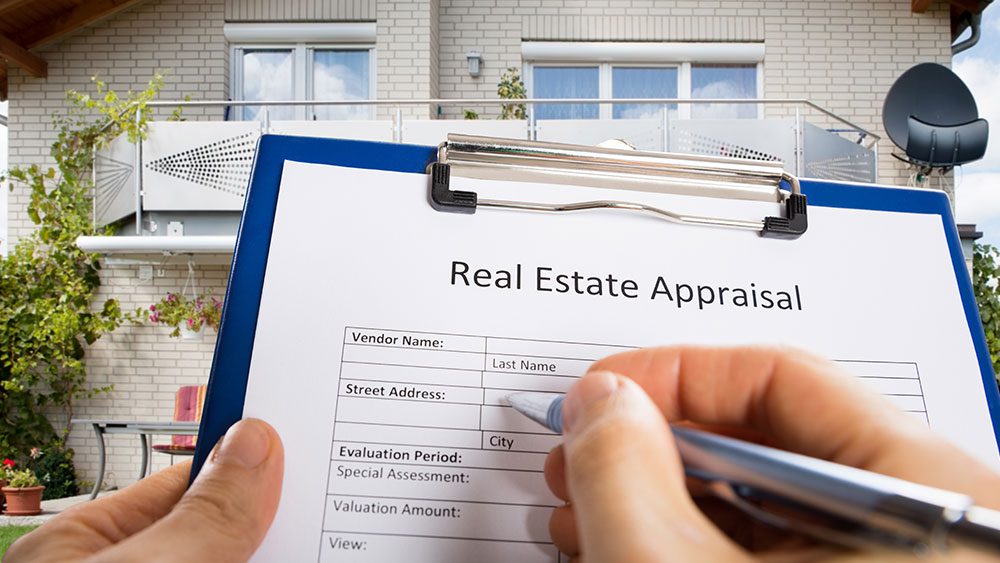Home appraisals performed by professionally certified appraisers are required in most real estate transactions and mortgage refinances. When a lender is involved in loans that use a property as collateral, they order an appraisal to ensure the property meets or exceeds the loan amount.
Appraisals protect the lender in case of subsequent default by the borrower and are performed well before closing or refinancing. Should the borrower default on the loan, the expectation is that the eventual sale of the property after foreclosure will cover the loan’s outstanding balance.
When properties are purchased with cash only, appraisals are not typically necessary. However, some cash buyers order a professional valuation to ensure they are not overpaying for a property before the transaction closes.
How Do Appraisals Work?
Mortgage lenders require a detailed appraisal before lending or refinancing an existing mortgage. However, none of the parties involved in the transaction, including the buyer, seller, lender, or real estate agent, are permitted to select who conducts the appraisal.
To avoid a conflict of interest, the Federal Reserve established the Home Valuation Code of Conduct (HVCC) in 2009 to ensure unbiased property valuations. The goal of the HVCC is to eliminate mortgage fraud and other forms of misconduct in the mortgage industry.
An Appraisal Management Company (AMC) manages the appraisal valuation process. The AMC employs a team of appraisers to execute appraisals. Once the appraisal report is ready, the AMC delivers it to the lender to further assess the property’s value. Mortgage lenders are forbidden to speak with home appraisers and can only communicate with them through the AMC.
The cost of the appraisal is typically the borrower’s responsibility. An appraisal typically costs $300 to $450 or more, depending on the work’s location and extent.
The requirements for a professional appraiser are:
- Licensed and certified. Each state has a specific appraiser regulatory agency that sets standards and oversees the licensing and certification of appraisers.
- Familiar with the area and surrounding neighborhoods.
- Impartial, not having an interest in the transaction.
Sometimes, the buyer’s loan application may be rejected by the lender if the appraisal is significantly lower than the selling price. When this happens, the buyer may ask the seller to lower their asking price to a level the bank is willing to lend. However, when there is a surplus of prospective buyers, sellers may be reluctant to lower their asking price, hoping a cash buyer makes an offer on the property.
In a cooler market climate, sellers may rethink their selling price, knowing future prospective buyers may face the same appraisal problem.
What Constitutes a Professional Appraisal?
For consistency and comparability, professional home appraisers use the Uniform Residential Appraisal Form for single-family homes created by Fannie Mae, the Federal National Mortgage Association. Fannie Mae is a U.S.-sponsored government enterprise designed to facilitate the availability of mortgages for homebuyers.
This standard form acts as a guide for appraisers to describe the interior and exterior of the home. The appraisal lists the square footage of the living space and exterior lot size, number of rooms, location, utilities, and all pertinent details in and around the property.
The appraisal also provides researched data about the neighborhood and a representative sampling of recent comparable sales. A completed appraisal form also includes:
- Street map showing the home location and recent neighborhood comparable sales, if any.
- Sketch of the exterior of the building.
- Details about the square footage calculations.
- Multiple photographs of the home’s exterior: front, back, and street view.
- Photographs of comparable home sales cited.
- Other details may include the home’s public tax records, homeowner associations, additional community-related information, and prior sales data.
Following the thorough appraisal and data-gathering process, which usually takes about 7 to 10 days, the appraiser submits an estimated value of the property to the lender. The sale can continue if the appraisal value meets or exceeds the value to justify the loan.
If the appraisal falls short, the prospective seller may challenge the appraiser’s estimate based on overlooked or mistaken assumptions. On the other hand, the home seller may be eager to sell for fear of future appraisals falling short of their asking price.
If the buyer thinks the appraisal is incorrect, the buyer might request a second assessment from another qualified appraiser. The prospective buyer may also request the seller lower their selling price.
Home Appraisals for Refinancing Mortgages
There may be a point when a homeowner may want to refinance their mortgage to take advantage of lower mortgage rates and reduce their monthly payments. Or they may want to refinance to withdraw some of the home’s equity and use it for other purposes.
To accomplish a refinance, homeowners apply to a lender to begin the process. In most instances, the lender orders a current appraisal to ensure the new mortgage balance does not exceed the current recovery value of the property.
© 2024 xpertRealtyMarketing.



